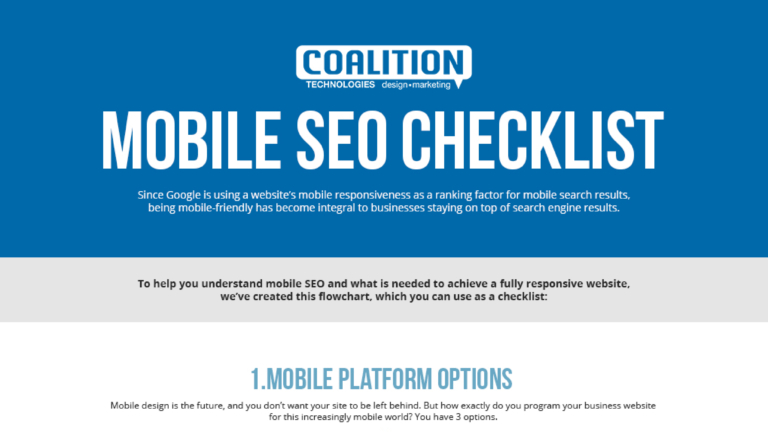Since Google is using a website’s mobile responsiveness as a ranking factor for mobile search results, being mobile-friendly is the key to businesses staying on top of search engine results. To help you understand mobile SEO and what is needed to achieve a fully responsive website, we’ve created this infographic.
- Mobile Platform Options
- Optimize Your Mobile Sites for Crawling and Indexing
- Optimize for Page Load speed
- Optimize Your Mobile Site Design and Content
To achieve success in your Mobile SEO strategy, it’s prudent that you pay attention to the changing trends in digital marketing. To help you understand mobile SEO and what is needed to achieve a fully responsive website. This checklist forms the basis of developing a mobile-friendly website that will help you rank better.




